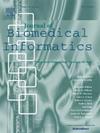实施生物银行的数字成熟度框架。
IF 4.5
2区 医学
Q2 COMPUTER SCIENCE, INTERDISCIPLINARY APPLICATIONS
引用次数: 0
摘要
目的:数字化是可重复性研究的支柱,也是研究基础设施的强制性要求。生物银行必须确保一个完全工程化和数字化的数据标准化过程。为此,第一步是使用定量指标评估当前的数字化水平,考虑到生物银行的多方面监管和后勤性质,这尤其具有挑战性。方法:我们开发了一个生物银行数字化评估成熟度框架BB4FAIR,包括一个调查,分为三个宏观领域,即IT基础设施、人员和数据注释丰富度。此外,我们实施了一个自动化的R/Shiny系统来分析调查反馈并生成可视化数据表示。我们在2023年与BBMRI签署合作伙伴章程的46家意大利生物银行试用了该工具。计分表促进了数字化成熟度的分级,突出了需要采取纠正措施的领域。结果:评估揭示了数字化三个宏观领域的显著异质性:几乎一半的生物库具有足够的IT基础设施和人员,而较小比例的生物库具有强大的数据注释能力。值得注意的是,大多数生物银行报告称拥有生物银行IT管理系统(BIMS)或可用于其目的的替代系统,但他们仍然以纸质形式收集生物银行的同意书;知情同意的数字化普遍缺乏。这些发现强调了有针对性地改进生物库数字化以提高整体数据公平性的必要性。结论:调查结果强调了加强IT培训和改进bbmri IT内数据注释资源的迫切需要。在“下一代欧盟”加强BBMRI的背景下,正在对许多缺乏的功能和需求采取纠正措施。”项目。本文章由计算机程序翻译,如有差异,请以英文原文为准。

Implementation of a Digital Maturity Framework for Biobanking
Objective
Digitalization is a pillar of reproducible research and a mandatory requirement for Research Infrastructures. Biobanks must ensure a fully engineered and digitalized process towards data FAIRification. To this aim, the first step is to assess the current level of digitalization using quantitative metrics, which is particularly challenging given the multi-faceted regulatory and logistical nature of biobanking.
Methods
We developed a Biobanking digital assessment maturity framework, BB4FAIR, comprising a survey divided into three macro areas, namely IT infrastructure, personnel, and data annotation richness. Furthermore, we implemented an automated R/Shiny system to analyse survey responses and generate visual data representations. We piloted the tool on 46 Italian biobanks that in 2023 had signed the partner charter with BBMRI. A scoring table facilitated the tiering of digital maturity, highlighting areas requiring corrective action.
Results
The assessment revealed significant heterogeneity across the three macro-areas of digitalization: almost half of the biobanks feature adequate IT infrastructure and personnel, and a smaller proportion have robust data annotation capabilities. Notably, most biobanks reported having a Biobank IT Management System (BIMS) or an alternative that serves their purposes, yet they still collect the consent to biobanking for future purposes in paper format; the digitalization of informed consent is generally lacking. These findings highlight the need for targeted improvements in Biobank digitalization to enhance overall data FAIRness.
Conclusion
The survey results underscore a pressing need for enhanced IT training and improved data annotation resources within the BBMRI.it. Corrective actions on many lacking features and desiderata are ongoing in the context of the #NextGenerationEu “Strengthening BBMRI.it” project.
求助全文
通过发布文献求助,成功后即可免费获取论文全文。
去求助
来源期刊

Journal of Biomedical Informatics
医学-计算机:跨学科应用
CiteScore
8.90
自引率
6.70%
发文量
243
审稿时长
32 days
期刊介绍:
The Journal of Biomedical Informatics reflects a commitment to high-quality original research papers, reviews, and commentaries in the area of biomedical informatics methodology. Although we publish articles motivated by applications in the biomedical sciences (for example, clinical medicine, health care, population health, and translational bioinformatics), the journal emphasizes reports of new methodologies and techniques that have general applicability and that form the basis for the evolving science of biomedical informatics. Articles on medical devices; evaluations of implemented systems (including clinical trials of information technologies); or papers that provide insight into a biological process, a specific disease, or treatment options would generally be more suitable for publication in other venues. Papers on applications of signal processing and image analysis are often more suitable for biomedical engineering journals or other informatics journals, although we do publish papers that emphasize the information management and knowledge representation/modeling issues that arise in the storage and use of biological signals and images. System descriptions are welcome if they illustrate and substantiate the underlying methodology that is the principal focus of the report and an effort is made to address the generalizability and/or range of application of that methodology. Note also that, given the international nature of JBI, papers that deal with specific languages other than English, or with country-specific health systems or approaches, are acceptable for JBI only if they offer generalizable lessons that are relevant to the broad JBI readership, regardless of their country, language, culture, or health system.
 求助内容:
求助内容: 应助结果提醒方式:
应助结果提醒方式:


